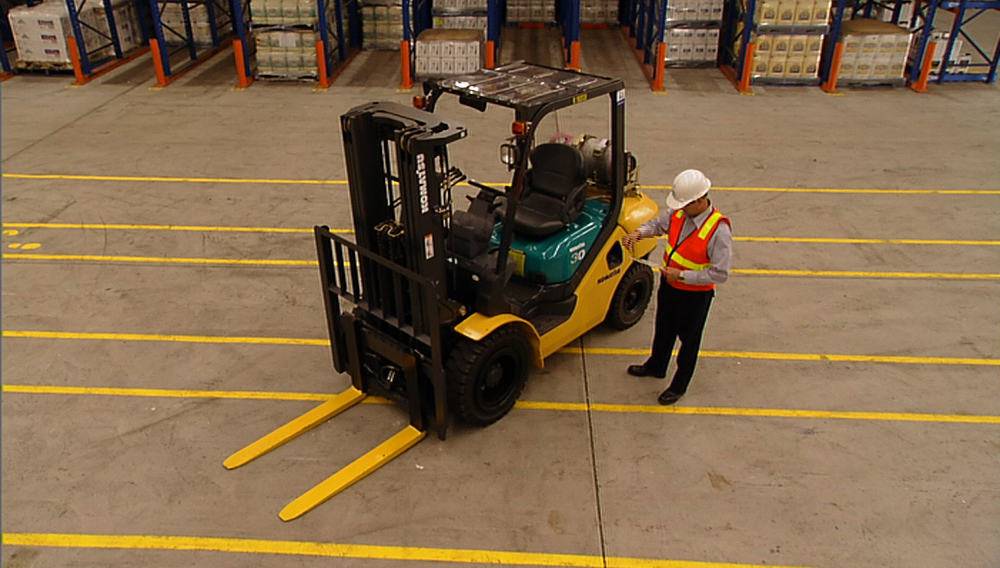Mastering Forklift Safety Training: A Comprehensive Guide

Prioritising workplace safety is of utmost importance to employers spanning diverse industries. This concern becomes even more pronounced in sectors where powered industrial trucks are standard. Mastering forklift safety training becomes foundational to creating a secure environment in such contexts. This comprehensive training, which encompasses a broad spectrum of subjects, covers everything from truck-related aspects to broader workplace-related concerns, assuming a pivotal role in ensuring safety.
Employers must ensure their operators receive certified training and evaluations to align with regulations and cultivate a safe environment. Beyond comprehending the machinery, an effective forklift safety training program entails identifying hazards, comprehensive training sessions, vigilant supervision, adherence to proper operating protocols, regular maintenance practices, thoughtful facility design, and the precise selection of lift trucks. If you want to enhance your skills, you can get your forklift licence at Trainix, or other similar places, where the training covers all aspects to ensure safety and compliance.
The Three Pillars of Forklift Safety Training
This training is built upon three core pillars: formal learning, practical application, and continuous evaluation. The journey towards becoming a certified operator starts with formal learning. This preliminary training can be conveniently undertaken online, equipping trainees with the foundational operation and safety protocols knowledge. Following formal learning, the practical application of this acquired knowledge takes place. During this phase, trainees can apply their newly-gained skills under the watchful guidance of their employers, gaining invaluable real-world experience. The third pillar involves the evaluation process, a critical step that ensures ongoing skill improvement and adherence to regulations. Regular assessment of operators’ skills and knowledge, conducted by supervisors and managers, is a safeguard for upholding a safe and compliant workplace.
Essential Forklift Safety Tips for Effective Training
Infusing crucial safety tips into the training curriculum bolsters the significance of safe operation. These tips fall into four primary categories:
- Grasping the different types and fundamental principles of powered trucks.
- Adhering to basic operating rules and safe practices.
- Recognising how diverse workplace conditions can impact safe operation.
- Fulfilling prerequisites for proper operator training.
It’s crucial to remember that Federal law prohibits anyone under 18 from operating it, and those over 18 must undergo proper training and licensing.
Constructing an Effective Program
A comprehensive safety training program transcends mere regulatory requirements – it’s a strategic safety measure that significantly reduces workplace accidents. This program should encompass key elements such as hazard identification and mitigation strategies, comprehensive training and continuous evaluation of operator competence, vigilant supervision, well-defined operating procedures, consistent maintenance and repair protocols, meticulous facility design, and a prudent selection of lift trucks.
Essential Components of a Training Program
A robust safety training program should encompass the following components:
- Formal Learning:This foundational step includes initial online or in-person training courses covering the operation and safety procedures.
- Practical Application:Following formal learning, employers provide hands-on training, allowing operators to apply their newly-acquired knowledge in a real-world environment using the specific forklifts they operate.
- Evaluation:Supervisors should regularly assess operators’ skills and knowledge to ensure safety and continuous improvement, observe their performance during daily tasks, and offer constructive feedback.
- Refresher Training:It’s recommended to have regular refresher training in specific situations, such as after an accident, near-miss incident, or when an operator is assigned a new type of forklift. Regular refreshers help operators remain updated with safety procedures and best practices.
The Significance of Forklift Safety Training Licensing
This safety training licensing is a legal requisite that ensures operators possess the necessary skills and knowledge for safe operation. The licensing process involves documentation of training, evaluation of performance, and issuance of a licence document. It is mandated periodically, emphasising the importance of maintaining safety standards.
Conclusion
This safety training and the opportunity to get your forklift licence at Trainix or similar training places, stand as a cornerstone of workplace safety, particularly in industries where powered industrial trucks are prevalent. By providing comprehensive training that encompasses formal learning, practical application, and regular evaluation, employers ensure their operators possess the requisite skills for safe operation.
Adherence to these safety training requirements helps prevent workplace accidents and shields employers from legal complications and fines. Prioritizing this safety training nurtures a safe working environment and fosters a culture of safety awareness within the organization. Transitioning from understanding the importance of this training to its active implementation can be seamlessly achieved through online training courses, offering a convenient and efficient way to put knowledge into action.










